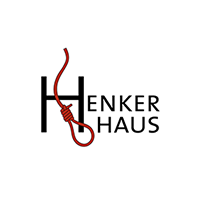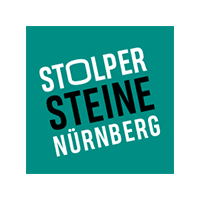Address from Grandson Henk Haas
Liebe Gäste, verehrter Herr Burgermeister, verehrte Behörden der Stadt Nuremberg, Familie und weitere Interessierten, in Namen der Nachkömmlingen von Sigmund und Else Dormitzer begrüße ich Ihnen herzlichst. Ich, Henk Haas, bin hier die älteste Enkel anwesend. Es gibt noch ein älterer Enkel, George Rogers. Er wird nächstes Jahr April hundert Jahre alt und last sich entschuldigen. Es gibt auch noch eine jüngere Enkelin, meine Schwester Irene, hier anwesend.
Eine Große Minderheit der Nachkömmlinge kommt aus England und versteht Deutsch nur mühsam oder wohl gar nicht. Deshalb fahre ich in Englisch fort. Es ist aber eine Deutsche Übersetzung verfügbar.
I just welcomed everybody, explained that I, Henk Haas, am the eldest grandchild present and that I will continue in English.
We are here to celebrate that Stolpersteine are placed in front of this house, Blumenstrasse 9. Stolpersteine created by the German artist Günther Demnig. Why Stolpersteine? Stolpersteine are there to remind us of the injustice done to the Jewish inhabitants in and about this house under the Nazi regime. And they are there to remind us never to do such things again. So what happened here? In the night of November 9, 1938, the “Kristallnacht”, our ancestors Sigmund and Else Dormitzer, who then lived here, were beaten up and mutilated first by 15 SA men. And shortly after by a gang of looters. Sigmund ended up in hospital with a broken nose. But that was not all. Sometime later they were forced to sell the house for 10,000 Reichsmark, 6 percent of its actual value of 150,000 Reichsmark. And most of that they lost again to pay “Reichsfluchtsteuer” or Emigration Tax for their emigration to the Netherlands. They fled “The 1000 Year Reich” with no more than 1,000 Reichsmark in their pockets. So that explains why we have the Stolpersteine here.
For your interest, I will tell you a little about the house and its inhabitants. In 1859, the town of Nuremberg developed its first extension beyond the walls. The Marienvorstadt. Immediately thereafter, in 1863, Salomon Forchheimer, Else’s father, had a double mansion build here, Blumenstrasse 7 and 9. Our Dormitzers moved in here about 1930. It is interesting to know that from 1499 AC to 1850 AC (351 years) no Jews were allowed to settle in Nuremberg. Salomon Forcheimer may have been among the first to acquire Settlement Rights, “Niedelassungs Rechte”.
Who were our Dormitzers? A couple of upper class Jewish citizens of Nuremberg. They got married the 1st of May 1898. He, Sigmund, was an influential lawyer, given the honorary title “Geheimrat” by the Free State of Bavaria. He was chairman of the board of any Jewish society of any importance in Nuremberg. She, Else, was basically a socially driven journalist. And she wrote children’s books under the name of Else Dorn. And she joined several important Jewish societies as soon as that was legally allowed for woman in Bavaria. And she was a promotor of cremation, a very unusual position in the Jewish religion. On her way from one meeting to the other she liked to have a beer at an outdoor counter. The order from the counter to the tap inside became proverbial in our family: “A Stehseidel für die Frau Geheimrat”. A Seidel of beer equals the English pint.
The Domitzers did not live alone in Blumenstrasse 9. Else’s sister Marie and her husband Julius Ottenstein plus their son Hans also lived here. And a sister of Salomon, Klara Forchheimer. Another occupant worth mentioning was the main servant Retta, “Die Stütze” (the Support), fondly remembered by George Rogers.
Via the Netherlands, where they had fled to in 1939, the Dormitzers were transported to Theresienstadt in 1943. Sigmund died there the 9th of December 1943. His name is remembered with an inscription on a brick in a wall of the Holocaust Monument in Amsterdam and on the wall in the “Hollandsche Schouwburg” equally in Amsterdam and in the databank of Holocaust victims. His brother in law Julius Ottenstein met the same fate, but the sisters Marie and Else survived. Else brought back a couple of poems, to be published in 1945 in a book “Theresienstädter Bilder”. All this can be read in a book on the life of Else by an American Professor Sandra Alfers PhD, titled “Weiter Schreiben” or in English “Traces of Memory”. And speaking of memories, there is Else on a picture as the “Poster Girl” of Jewish life in the 20th century in Nuremberg in a museum on the history of the Jewish people in Nuremberg near the Sebalduskirche.
After the war Else lived 6 months with her daughter Elizabeth (Lisel) in London and six months with her other daughter Hildegard (Hilo) in Hilversum, mother of my sister Irene and me. We remember our grandmother well. She did as in the book’s title “Weiter Schreiben” all day long. She died in London 80 years old on June 3rd 1958.
And the house, what happened to the house? At first after the forced sale it became an “Arisierungsstelle”. An office where disowned Jewish property was sold or re-allocated to “Arian” people or institutions. It was bombed in the war, rebuilt and now houses a printer’s office as far as I know.
I want to end with some acknowledgements for those who made the Stolpersteine and this ceremony possible. Our daughter Judith Haas who took the initiative. Her lawyer Julius Niesert who set up the contact with Nuremberg. Dr. Pascal Metzger, historian who coordinated this ceremony. My cousins George Rogers and Thomas Runkel who helped me out on the history of the house and its inhabitants. My sister Irene Stofkoper-Haas for her Family Tree of Sigmund and Else and their descendants. Let us not forget Leibl Rosenberg, historian, who curated an exhibition on Jewish Nuremberg and lifted our grandparents out of oblivion. And my old friend Ernst Krakenberger who informed me on the Marienvorstadt. And last but not least Sandra Alfers PhD, for her book “Weiter Schreiben” were you can read all this better and in more detail.
And I am grateful for the presence here of Great Grandchildren (Urenkel:Thomas, Nigel, Anne, Martijn, Jasper, Judith) and Great Great Grandchildren (Ur-Urenkel: Anna, Lisa, Moritz an our Alon). I can assure you that there are many more alas not being able to be present here. There are now, almost 80 years after the War, as many descendants of Sigmund and Else as there are “Stars in the Sky or Sandgrains on the Beach” as they say in The Book.
Zurück nach Deutsch. Wie gesagt, alle hier Danke Ich für Ihre Anwesenheit. Und last uns nicht vergessen, dass wir hier sind um bei diese Stolpersteine wieder einmal zu überdenken, was für Unheil zu dieser Stolpersteine geleitet hat und um zu hoffen das Solches nie wieder geschieht.
Nie wieder, Never again.



